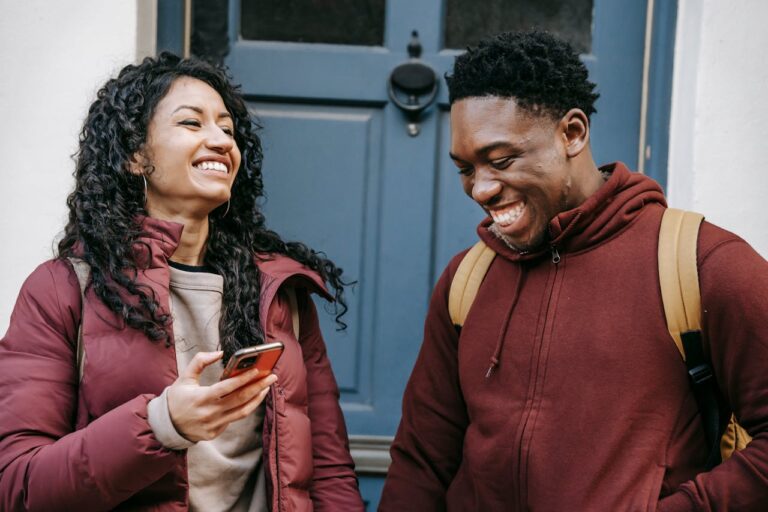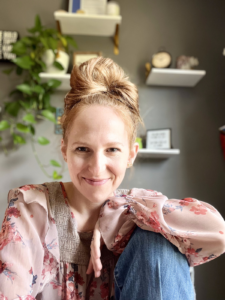
Maybe you’d like to be more social—to make more friends, go to more events, or even find a new partner. But, when you get the chance to meet new people, you’re not sure what to say. Maybe you stumble through an awkward opening, go quiet, or avoid situations in which you could meet new people altogether.
It’s typical to feel anxious about meeting new people and putting yourself out there. Knowing some tried-and-true conversation starters can boost your confidence: Even though you can’t control everything about how other people respond to you, you can definitely plan ahead to smooth the way to a potentially great conversation.
How to Start a Conversation With Your Crush
First, we want to determine what is your relationship to your crush? Are they a friend, a friend of a friend, an acquaintance, or someone you gaze at from afar every morning at your favorite coffee shop? Your current relationship to your crush, as well as both of your personalities, will determine the best ways to approach them. It’s best to be direct about your interest while respecting your crush’s boundaries and, gulp, their freedom to turn you down.
Assuming that you’re not already friends with your crush and that you’d like to get to know them better, light conversation or “small talk” is a good way to build rapport. If your crush is a friend of a friend, and your mutual friend is trustworthy, you can let them know that you’d appreciate more opportunities to hang out as a group. These conversations will probably give you a better idea of who your crush is, whether they’re actually someone you’d like to date, and what shared interests the two of you have. For example, if you both love a musician that your other friend doesn’t love, you can say, “Hey, Tamara Shift is playing live here next month. Do you want to go?”
If the crush is a stranger, and you’re looking for a relationship, don’t moon over them from across a crowded café for the next several months. As long as the stranger looks age-appropriate and doesn’t seem desperate to be left alone, you can probably find a good moment to exchange a few words with them. For example, if you’re in line together at the café, you can say something like, “Have you ever tried the pastries here? Is the blueberry muffin good?” Your opening line doesn’t need to come off as staggeringly brilliant—the point is not to impress; it’s to offer a moment of connection and see whether the other person reciprocates with openness and interest.
How to Start a Conversation With a Stranger

Research shows that, although we often prefer to keep to ourselves, people report that they experience greater positive emotions after greeting, thanking, or expressing good wishes to their shuttle driver during a commute (Gunaydin et al., 2021). Indeed, even small things like striking up a casual conversation with the grocery store clerk has been shown to increase feelings of well-being (Martela & Ryan, 2016).
In these circumstances, you’ll likely need to reply more heavily on non-verbal cues, since a stranger is less likely to come out and directly say, “I’m here for some peace and quiet, please leave me be.”
Facial expressions (including more subtle micro-expressions), body posture, spacial distance, and gestures will provide you with valuable insight about how the other person is reacting to your attempts to connect with them.
For example, your sitting at that café and your crush gets up to stand in line. You see an opportunity and follow suite, taking up residence right behind them. You muster the courage to tap their shoulder and they make a half-turn backward toward you. Their arms are crossed tightly and their lips are pressed flat together, they look at you with both eye brows raised, they don’t say a word, but instead make an inquisitive grunt. In this scenario, the non-verbals are very clear – they are not in the mood for an impromptu chat with you (or probably anyone, for that matter).
Non-verbal cues can be difficult to pick up on and interpret for some people. If that’s one of your difficulties, I recommend spending some time learning about non-verbal cues and practice mindfully attuning to them in your daily interactions. This can help you improve your ability to notice and interpret non-verbal cues in these more high-stakes situations. Here’s a great place to start!
How to Start a Conversation With an Old Friend
Do you have an old friend whom you miss and keep planning to call–then next thing you know, 6 months have gone by? Don’t sweat it–almost everyone is busy, and it’s likely your friend will be excited and happy to hear from you.
When you’ve fallen out of touch with a friend, it could be as simple as a text saying, “Hey, how are you? Do you have time to catch up in the next couple of weeks?” You could also simply pick up the phone and call–although this extreme extrovert move may not work for everyone. It could also be fun to exchange postcards occasionally–it’s rare and exciting to receive mail that isn’t junk, and people always feel special finding a card or postcard among assorted grocery store flyers and credit card offers. A cute postcard can turn into a multi-hour video chat!
How to Start a Hard Conversation
Similarly to conversations after a fight, it is best to start a hard conversation when both you and the other person feel calm and willing to engage. In fact, the success – or failure – of a romantic relationship can actually be determined by the way we approach having the hard conversations (Carrère & Gottman, 1999).
That’s why I almost always recommend that my clients first collaborate with the other person to agree on a day and time to have (or continue) the hard conversation. While this might not be realistic with all types of relationships, it’s an essential strategy in romantic relationships. Once you get to the conversation, assertivness skills are key.
Be direct but non-blaming, Use “I statements” and try to communicate your intended message as clearly as possible, with mutual respect of both your own and the other’s feelings and needs. It can also help to broach the challenging subject during a shared activity, such as a walk. Many people feel more comfortable discussing emotional subjects when they’re moving their body or working with their hands (as opposed to sitting across from another person who expects consistent eye contact).
Not only can this help ease our nervous system’s stress response, but it can help us process out the adrenaline that does get released more efficiently (you know, that energy that can drive you to lash out, get loud, and generally act in ways you often regret).
Small Talk Examples
Small talk and striking up conversations with interesting people–strangers, acquaintances, new friends, and old friends, can be extremely rewarding and fun. Below are several examples of conversation starters for when you’d love to reach out but don’t know how.
● “I love your hair!” – Most people appreciate a sincere, non-creepy compliment, especially if you’re complimenting something they put effort into.
● “Can I pet your dog?” – Perhaps with a neighbor whose dog is sitting at your feet, staring up at you and wagging her tail.
● “Do you work with ___?” – How you could begin a conversation with a coworker whom you pass in the hallway several times a week.
● “Do you want to catch up over the phone sometime this week?” – A frequent text from or to long-distance friends.
● “I was by [football stadium] the other day and it reminded me of you! How are ya?” – Text to a sports lover.
To Sum-up the Small Talk

When striking up a conversation to connect socially, you can think back to what you have enjoyed or appreciated when others struck up conversations with you. Most people respond positively to friendliness, sincerity, respect for boundaries, humor, and appreciation.
Also, dating and making friends can be a numbers game–if, for example, someone doesn’t reply to your dating site message, you can respectfully leave them alone—their silence doesn’t mean that no one will respond, and out of the many users of the app, someone probably will.
Last, when building social skills, try practicing a growth mindset and treat each interaction as a mini experiment. With practice and reflection, I’m confident that you’ll find conversation starters that work for you!
References
Carrère, S., & Gottman, J. M. (1999). Predicting Divorce among Newlyweds from the First Three Minutes of a Marital Conflict Discussion. Family Process, 38(3), 293–301. https://doi.org/10.1111/j.1545-5300.1999.00293.x
Gunaydin, G., Oztekin, H., Karabulut, D. H., & Salman-Engin, S. (2021). Minimal social interactions with strangers predict greater subjective well-being. Journal of Happiness Studies, 22, 1839-1853.
Martela, F., & Ryan, R. M. (2016). Prosocial behavior increases well-being and vitality even without contact with the beneficiary: Causal and behavioral evidence. Motivation and Emotion, 40(3), 351–357.

Katie Bingner, MS, LCPC, is a integrative trauma-informed psychotherapist and communication coach, who’s spent the past 16+ years in the health and wellness industry. Katie has dedicated the past 9+ years to helping others (and herself) navigate mental health challenges, Learn the skills of connection, as well as how to embrace our shared humanness.
Reach out to learn more about Katie’s services
